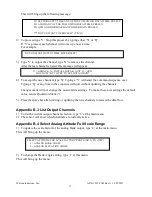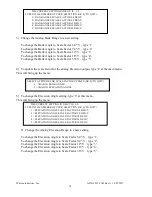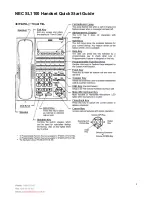
Watson Industries, Inc.
ADS-C232-3AD Rev A 10/25/2017
3
CAUTION!
Watson Sensors are rugged devices that have been used successfully in a number of harsh
environments. The components have been qualified to withstand a mechanical shock of 500g 's or
greater, and most enclosures provide near that level of protection. However, dropping a sensor
from waist height onto a hard floor can cause a shock level of 600g's. At this level, given some
resonance, damage is possible.
Introduction
The Watson Industries Vertical Reference represents a significant advancement in inertial sensor
technology. It is a highly accurate and rugged device with many advantages over other types of
angular rate and incline-sensing devices. This manual describes operation of the Watson Industries
Vertical Reference and also provides useful application information to the system designer.
Product Description
The Watson Industries Vertical Reference System is an entirely solid-state sensor that provides
exceptional rejection from the adverse effects of inertia and short-term lateral accelerations. It does
this through the use of both an accelerometer based vertical reference and an angular rate sensor
which is integrated to provide additional information on angular position. It can be a functional
replacement for mechanical gyros which are often more expensive and which cannot provide the
reliability of a solid-state sensor. Theory of operation is described with more detail later in this
manual. The specifications, size and pinouts are also described later in this document
The Watson Vertical References provide for two types of analog output voltages. One is
proportional to angular rate and the other is proportional to angular displacement. Full-scale
analog outputs produce an output of ±5 volts dependent upon the direction of angular position or
rotation. During rotation, positive voltage output occurs in the direction of the rotational arrow
indicated in figure 2. At horizontal and zero angular rotation rate, both outputs for displacement
and rotation rate are near zero. A power supply, pro8 to +45 Volts DC, is required to
operate the unit.
Special options in power supply, output voltage, scale calibration, and special packaging are
available as custom units. Pricing and delivery information on custom units is available by
contacting the factory.
Installation
Orientation
The base of the unit is to be mounted on top of a horizontal surface with the single foot toward the
forward direction of the vehicle. The ADS drawing, with wire call outs, is located in Figure 2. The
ADS is a rugged device and will withstand harsh environments. However, due attention needs to be
paid to the nature of the sensor and its prime function, which is to measure attitude and motion.




































